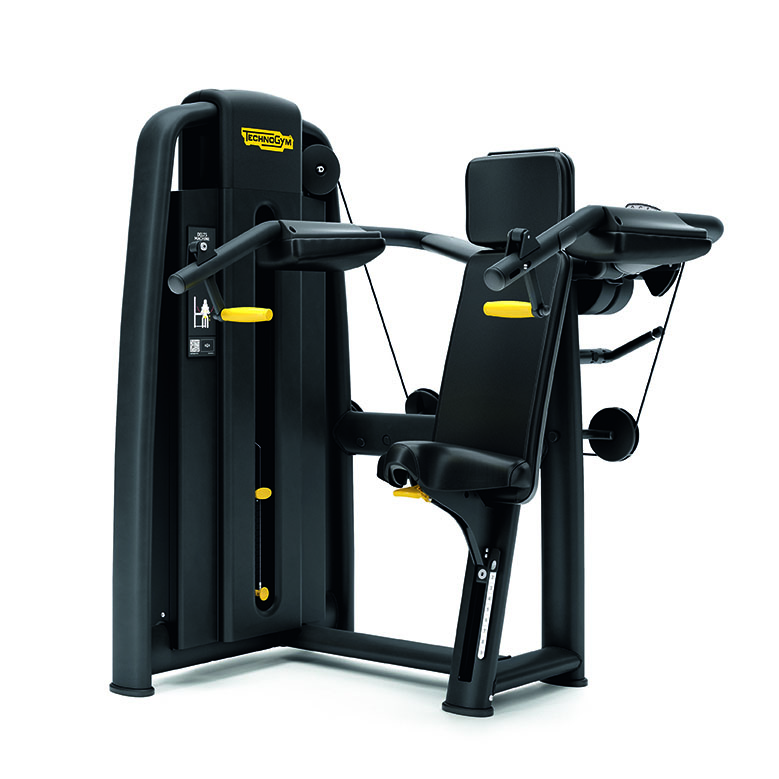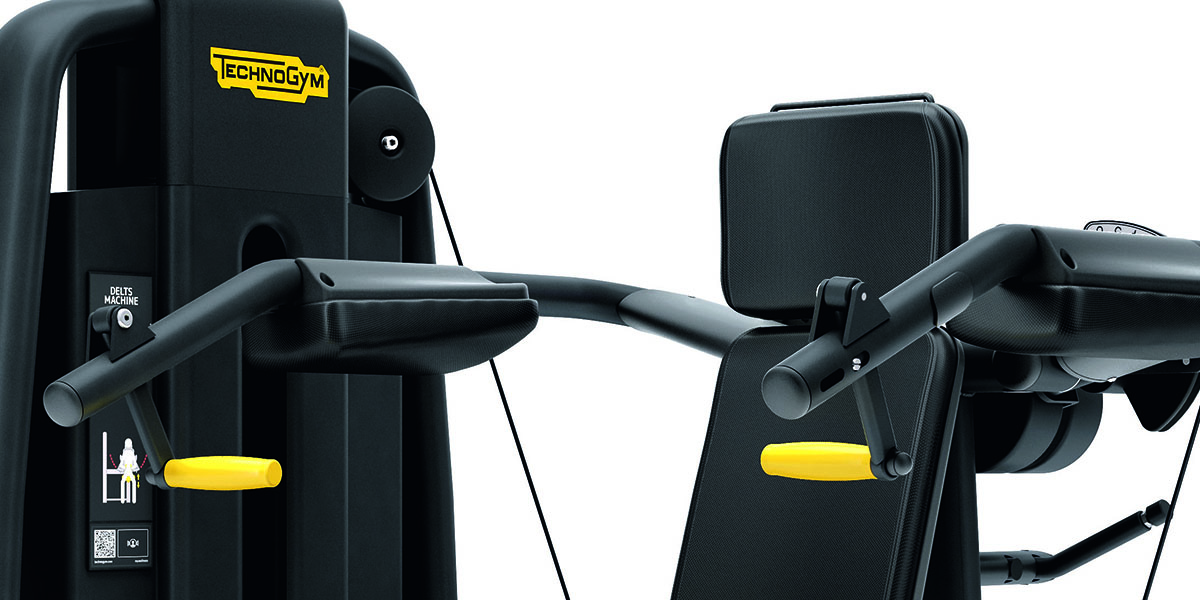WRITTEN BY WOODSIDE DIRECTOR OF TRAINING, JOHN BEANE
In a previous article we discussed the topic of hypertrophy and some of the benefits that come from building and maintaining skeletal muscle. We are going to build on that topic in this article but through the lens of longevity. We now know through several research studies that preserving not only the amount of skeletal muscle but also the quality of that muscle is vital for long term health optimization. Preserving skeletal muscle mass for longevity offers numerous benefits. First, it promotes functional independence by allowing individuals to perform daily activities with ease and reduces the risk of falls and injuries. Second, maintaining muscle mass contributes to metabolic health by regulating blood sugar levels, reducing the risk of insulin resistance and type 2 diabetes and aiding in weight management. Additionally, skeletal muscle mass is closely linked to optimal bone health, reducing the risk of osteoporosis and fractures. Preserving muscle mass also lowers the likelihood of developing cardiovascular diseases and certain types of cancer. Lastly, it improves overall quality of life by enhancing balance, coordination, flexibility and mental well-being. By prioritizing muscle preservation with the appropriate movement, nutrition and recovery strategies individuals can enjoy these benefits and enhance their longevity.

In the previous article mentioned above, we focused on plate-loaded equipment and provided some protocols to target hypertrophy. Plate-loaded equipment is certainly effective for building and maintaining skeletal muscle as is the use of dumbbells, barbells, cables, etc. However, there is one set of equipment that is often left out of the discussion for one reason or another – selectorized equipment.
Somewhere along the way selectorized equipment got a bad rap among the fitness elitist and “know-it-all” gurus in the industry. I’m not sure why but my guess is the perception that these pieces are easy, biomechanically inefficient or not functional (eye roll). Training is all about context and as any reputable person in the industry will tell you the correct answer as to whether something is effective is, “it depends.” The only exception here might be the shake weight; that one’s tough to justify. Peer-reviewed research consistently supports the effectiveness of selectorized strength equipment for hypertrophy by providing targeted muscle activation, controlled resistance, safety, progressive overload, versatility and convenience. It is important to note that incorporating a variety of training modalities, including both selectorized machines and free weights, can further optimize hypertrophy outcomes by promoting muscle adaptation and avoiding stagnation. Below is a summary of each of these benefits.
1. Targeted Muscle Activation: Selectorized strength equipment allows for precise targeting of specific muscle groups. Research has shown that isolation exercises, facilitated by selectorized machines, can effectively activate and stimulate hypertrophy in the targeted muscles. This is particularly advantageous for individuals who aim to focus on specific muscle groups or address muscular imbalances.
2. Controlled Resistance: Selectorized strength equipment provides controlled and consistent resistance throughout the range of motion. This controlled resistance facilitates optimal muscle activation and tension, which are crucial for stimulating hypertrophy. By maintaining constant tension on the target muscles, selectorized machines help to maximize muscle fiber recruitment and promote muscle growth.

3. Safety and Injury Prevention: Selectorized machines offer a safer training environment compared to free weights, especially for beginners or individuals recovering from injuries. The guided movement patterns and adjustable resistance levels of selectorized equipment reduce the risk of improper form and potential injuries. This allows individuals to safely perform exercises with a focus on hypertrophy without compromising their safety.
4. Progressive Overload: Progressive overload, the gradual increase of stress on the muscles over time, is a key principle for hypertrophy. Selectorized strength equipment typically allows for easy adjustment of resistance, enabling individuals to progressively increase the load as their strength and muscle capacity improve. This progressive overload is essential for stimulating muscle growth and achieving hypertrophy.
5. Versatility and Convenience: Selectorized machines offer a wide variety of exercises targeting different muscle groups. This versatility allows individuals to design comprehensive training programs that target specific muscles for hypertrophy. Moreover, the convenience of selectorized equipment, with its easy adjustment and quick transition between exercises, enhances training efficiency and adherence.
You can find several pieces of Technogym Selectorized Equipment at Woodside to incorporate into your training program. To get the best use out of them remember to apply the same programming variables for hypertrophy or maintaining your muscle mass that you would with other pieces of equipment. The National Strength and Conditioning Association (NSCA) recommends considering the following variables when building and maintaining muscle mass:
Intensity: The intensity of your workouts plays a significant role in muscle development. It refers to the amount of weight or resistance used during an exercise. To build muscle mass, the NSCA suggests using weights that allow you to perform 8-12 repetitions with proper form, reaching muscle fatigue by the final repetitions. Use of the RIR (reps in reserve) process here can be effective, i.e. getting two more reps would be difficult. *Research has also shown benefits in the rep range of 5-30 per set so please keep in mind that the 8-12 reps suggestion is simply an easy range to work with.
Volume: Volume refers to the total amount of work performed during a training session. It is determined by the number of sets, repetitions, and exercises performed. To promote muscle growth, the NSCA recommends performing multiple sets (3-6) of each exercise with an appropriate weight, aiming for a total of 10-20 sets per muscle group per week.
Frequency: The frequency of your workouts refers to how often you train a specific muscle group. To build and maintain muscle mass, the NSCA suggests training each muscle group 2-3 times per week. This allows for adequate recovery between sessions while providing sufficient stimulus for muscle growth.

Progressive Overload: Progressive overload is the gradual increase in training stimulus over time. This can be achieved by increasing the weight lifted, the number of repetitions performed, or the number of sets completed. Progressive overload challenges the muscles and stimulates further growth and adaptation.
Rest and Recovery: Giving your muscles enough time to recover and adapt is vital for muscle growth. Adequate sleep, proper hydration and incorporating rest days into your training schedule are essential. Additionally, managing stress and incorporating techniques such as foam rolling and stretching can aid in recovery.
Remember, everyone’s needs and abilities are different, so it’s important to tailor your training program to your individual goal. As always, if you need assistance with set-up, programming, or general questions about training please feel free to contact us.
Our Training team can help you incorporate selectorized equipment into your workout routine. To learn more click here or email us.
